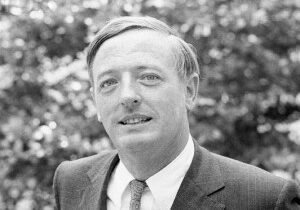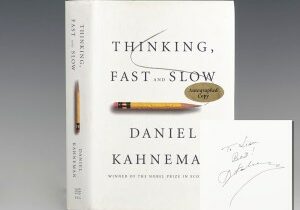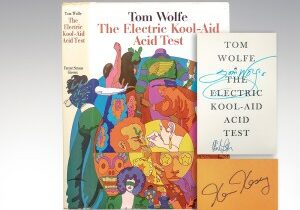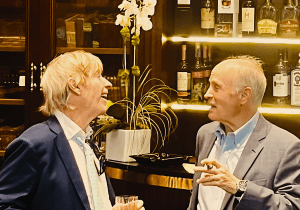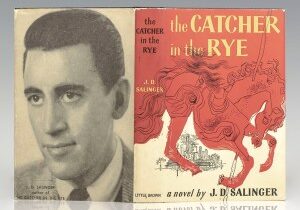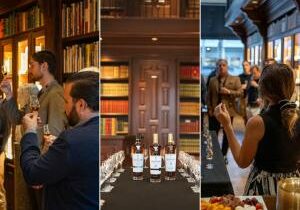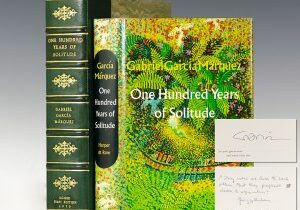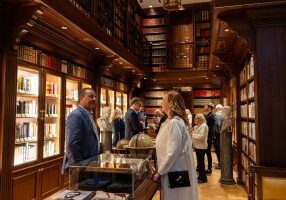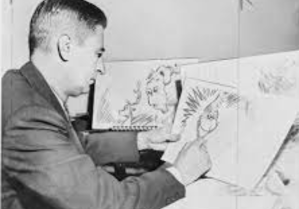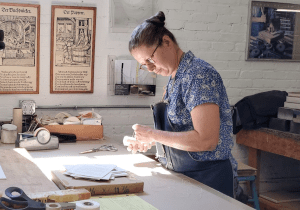Perhaps the most influential figure of the 1950s pop art movement, American artist Andy Warhol bridged the gaps between consumerism, celebrity culture, and high art with his conceptional sculptures and iconic silk screen paintings. Warhol began his career as a graphic artist, designing commercial advertising and artwork for such popular magazines as Glamour, Vogue, and Harper’s Bazaar and later as a designer for shoe manufacturer Israel Miller.
He was soon recognized for his unique, experimental style and, as his fame in the New York art scene grew, was exhibiting at the Hugo and Bodley Galleries.
In the 1960s Warhol started working with images of iconic American objects and celebrities, creating bold portraits of Campbell’s Soup cans, Coca-Cola bottles, Marilyn Monroe, Elvis Presley, Marlon Brando, and Elizabeth Taylor. In 1962, he established his studio, “The Factory” on the fifth floor at 231 East 47th Street, in Midtown Manhattan which became the hip hangout for a wide range of artists, writers, musicians, socialites, and underground celebrities who came to be known as the “Warhol Superstars”.
In his earlier years as an advertisement illustrator, Warhol used assistants to increase his productivity, and this spirit of collaboration remained a defining (and controversial) aspect of his working methods at The Factory. In the words of musician John Cale: “It wasn’t called the Factory for nothing. It was where the assembly line for the silkscreens happened. While one person was making a silkscreen, somebody else would be filming a screen test. Every day something new.”

Andy Warhol’s Campbells Soup Can (Tomato), 1962
In November of 1962, Warhol was offered his first solo exhibition at Eleanor Ward’s Stable Gallery which featured his works Marilyn Diptych, 100 Soup Cans, 100 Coke Bottles, and 100 Dollar Bills and in 1964, he was invited to display his work in The American Supermarket exhibition which was one of the first mass events to directly confront the general public with both pop art and the perennial question: what is art?

First edition of Andy Warhol’s Exposures; inscribed by Andy Warhol with a large original drawing of a heart
In the 1970s, Warhol devoted most of his time to rounding up new, wealthy patrons for portrait commissions including Mick Jagger, John Lennon, Diana Ross, and Brigitte Bardot. He was known to frequent various nightspots in New York City, including Max’s Kansas City and Studio 54. In 1979, Warhol published his candid and engaging photobook Andy Warhol’s Exposures featuring a variety of spontaneous shots of Studio 54’s frequenters including Liza Minnelli, Salvador Dali, and Truman Capote. The work was a regarded as a grand expression Warhol’s “…freewheeling existential exuberance and energy” (Parr & Badger II:144).
In 1969, with British journalist John Wilcock, Warhol founded Interview Magazine, which was soon nicknamed: “The Crystal Ball of Pop”. Featuring interviews with celebrities, artists, musicians, and creative thinkers, early copies were given away to the “in-crowd” to encourage the magazine’s circulation which quickly grew in popularity. Artist Richard Bernstein created the unique cover art for Interview from 1972 to 1989, and after several years of overseeing the magazine’s production, Warhol resigned most of his duties to act as an ambassador, distributing issues in the street to passersby and creating ad hoc signing events on the streets of Manhattan, New York City.

First edition of The Philosophy of Andy Warhol (From A to B and Back Again); inscribed by Andy Warhol with a doodle
In 1975, Warhol published The Philosophy of Andy Warhol in which he notably expounded: “Making money is art, and working is art and good business is the best art.” More of a collection of riffs and reflections than a memoir, Warhol spoke of his philosophy on love, sex, food, beauty, fame, work, money, and success and reminisced about his childhood in Pennsylvania, his good times and bad in New York, the explosion of his career in the sixties, and his life among celebrities. Truman Capote described the work as: “Acute. Accurate. Mr. Warhol’s usual amazing candor. A constant entertainment and enlightenment”.

Signed limited edition of Andy Warhol: Portraits of the 70s; one of only 200 copies signed by Andy Warhol
In 1979, the Whitney Museum of Art mounted a major exhibition devoted to Warhol’s work. “There [was] this major difference [between the work in this exhibition and Warhol’s early work of the 1960s]: whereas the earlier work was very neat and precise in execution (the Brillo box had, after all, to look like a Brillo box), the new work [had] a very slapdash look. This, as they say, [was] no accident. In the 60’s it was important for artists of the Pop school not to appear to have any affinity with Abstract Expressionism, but in the 70’s — such [were] the vicissitudes of taste—it was O.K. again for paintings to look smeary and ‘unfinished’…” (New York Times).
Robert Rosenblum said of the work in the 1979 Whitney exhibition: “With Warhol’s gallery of contemporary faces, the decade of 1970s high society is instantly captured. In this glittering realm, light and shadow are bleached out by the high wattage of spotlights; colors seem selected from the likes of Baskin-Robbins; and brushstrokes offer an extravagant, upper-income virtuosity which appears to be quoting, for conspicuous consumption, a bravura tradition that extends from Hals through de Kooning”.
Published in 1985, Warhol’s classic work of sixteen silkscreen portraits, Reigning Queens, contained a portfolio of sixteen portraits: four prints each of Queen Elizabeth II of the United Kingdom, Queen Beatrix of the Netherlands, Queen Ntfombi Twala of Swaziland and Queen Margrethe II of Denmark. Warhol used official photographs of each Queen regnant overlaid with Warhol’s trademark abstract color blocks and a print from the ‘Royal Edition’ of Queen Elizabeth II was acquired by the Royal Collection of the British royal family in 2012. The print is the only one in the Royal Collection that Elizabeth did not sit for or commission.
In addition to the rare books signed by Andy Warhol featured above, our collection includes a rare signed limited gold edition of Andy Warhol’s Exposures; one of 1000 numbered copies (although less than 200 are rumored to have been printed) signed by Warhol. View all of the rare pieces related to Warhol currently in our collection here, and browse Art and Architecture.






